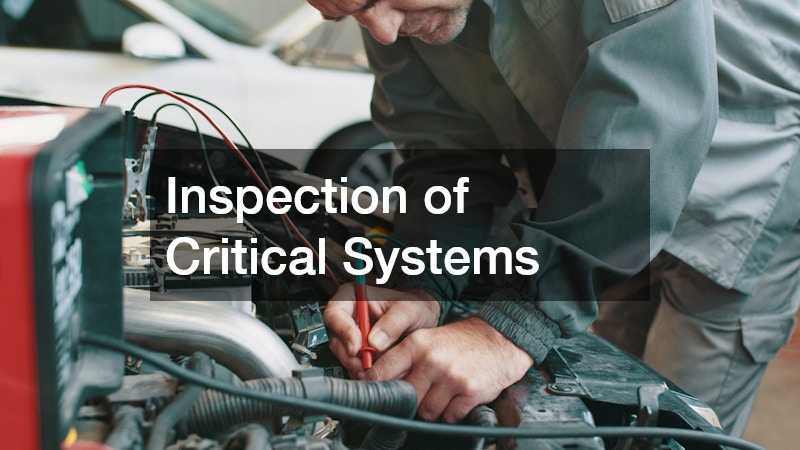Regular vehicle maintenance is crucial to ensure the longevity and safety of your car. Many drivers often wonder how often they need to service their vehicles, and the answers can depend on various factors. This article explores the recommended service intervals and factors affecting maintenance schedules and auto repairs.
General Guidelines for Vehicle Servicing
Manufacturer’s Recommendations
The easiest way to determine your vehicle’s service intervals is by consulting the owner’s manual. Manufacturers provide detailed guidelines based on extensive testing of their models.
Adhering to these recommendations can prevent unexpected breakdowns and ensure your vehicle is running optimally.
The owner’s manual typically outlines schedules for different components such as oil changes, tire rotation, and inspections. Following these manufacturer guidelines is crucial, as each make and model might have specific needs. Staying true to these intervals can significantly reduce the likelihood of costly repairs down the line.
Ignoring the manufacturer’s recommendations can lead to accelerated wear and tear and may void your warranty. Therefore, knowing your vehicle’s precise service requirements is an investment in its future reliability. These guidelines are the baseline for any responsible vehicle maintenance routine.
Mileage-Based Servicing
Mileage often dictates service needs, with common intervals being every 5,000 to 10,000 miles. Such mileage-based servicing ensures that essential components are checked and replaced as needed to maintain vehicle performance. Typically, oil changes are the most frequent service performed during these intervals.
Service intervals can vary greatly depending on the vehicle’s make, model, and age. Newer vehicles may have longer intervals due to advanced engineering and durable materials. It’s important to track your mileage diligently to ensure you don’t miss these critical service windows.
Performing checks at these mileage milestones can catch issues early before they become major problems. Brake inspections, tire checks, and fluid top-offs are also common at these intervals. This proactive approach can enhance your vehicle’s safety and efficiency, giving you peace of mind.
How Driving Conditions Affect Service Frequency
Severe Driving Conditions
Driving in extreme conditions, such as excessive heat, heavy traffic, or on rough roads, can necessitate more frequent servicing. Conditions like these qualify as ‘severe’ and require drivers to adhere to more stringent service schedules. Neglecting to adjust service frequency in these situations can lead to accelerated wear and damage.
For example, vehicles frequently subjected to stop-and-go traffic or dusty environments might need oil changes more frequently. Heat can cause fluids to break down faster, impacting their ability to lubricate and protect. Understanding how these conditions affect your vehicle can help you adapt your maintenance schedule accordingly.
Consulting with a trusted mechanic can help determine if your driving habits fall under the severe category. They can provide insights into necessary adjustments for your service intervals and recommend specific maintenance tasks. Proper care under these conditions can extend the life expectancy of your car significantly.
Normal vs. Severe Usage
Learn the difference between normal and severe usage classifications and how to determine which category your driving habits fall into. Typical normal usage might include highway driving at consistent speeds with moderate climate conditions. However, what might be normal in one area could be severe in another, depending on several variables.
For instance, driving on well-maintained roads with mild temperatures usually falls within the ‘normal’ category. Conversely, heavy towing, frequent short trips, and driving in polluted or extreme climates might be considered ‘severe’. Understanding these categories helps tailor your maintenance routine more effectively.
Monitoring your driving conditions regularly and adjusting your maintenance schedule can prevent unnecessary wear. Severe usage often shortens service intervals, requiring more frequent checks and replacements. By identifying your driving patterns, you can make informed decisions to better protect your investment.
Routine Maintenance Checks
Essential Fluids and Filter Changes
Routine maintenance should focus on checking and replacing essential fluids and filters, such as oil, coolant, and air filters, to keep the car’s systems running smoothly. Regularly changing these fluids and filters ensures that your vehicle functions efficiently without strain. These elements are pivotal in preventing build-up and blockages that can lead to serious issues.
For example, oil lubricates the engine, minimizing friction and wear. Over time, oil can become contaminated, reducing its effectiveness and potentially harming your engine. Likewise, clean filters are critical in maintaining air quality and preventing particles from entering sensitive areas.
The frequency of these changes will depend on both time and mileage, and having a schedule is essential. Neglecting these basic tasks can lead to diminished performance and increased fuel consumption. Keeping a log can help ensure these critical elements are always in top condition.
Inspection of Critical Systems
Regular inspections of critical systems, like brakes, transmission, and suspension, can prevent costly repairs and ensure your vehicle remains safe. These inspections should be part of every comprehensive service. Brakes, in particular, are crucial as they directly impact your safety.
The transmission system requires particular attention as problems can escalate quickly if left unchecked. A failing transmission can affect the ability to change gears smoothly, leading to larger systemic issues. Regular checks allow for early detection of potential problems, minimizing risks and costs.
Understanding the service needs of your vehicle depends on several factors, including the manufacturer’s guidelines, driving conditions, and type of usage. Regular maintenance not only extends the life of your vehicle but also keeps you safe on the road. By adhering to recommended maintenance schedules and adapting to your vehicle’s specific needs, you can ensure a reliable and efficient drive every time.

